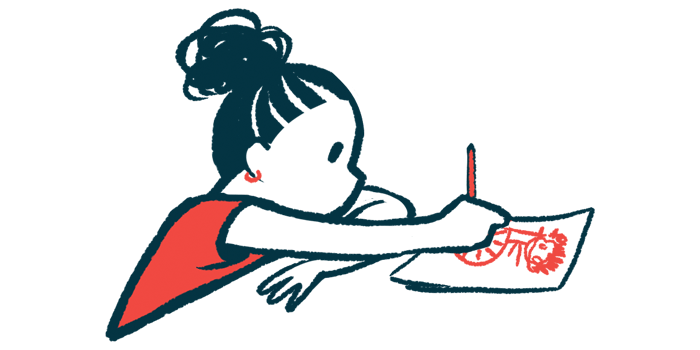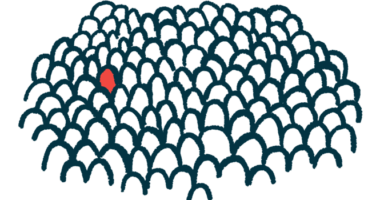Antipsychotics Plus Therapy Ease Behavior Problems in Girl, 6: Study

Treatment with low-dose aripiprazole — a newer class of antipsychotic medication — in combination with psychotherapy, and behavioral and occupational therapy, was found to lessen behavior, attention, and educational problems in a 6-year-old girl with Dravet syndrome, according to a case study.
This case points out a potentially effective approach for the management of Dravet’s neurodevelopmental and psychiatric symptoms, which are often overlooked, and for which there are no established treatment recommendations.
Further research is needed to better understand the psychiatric and behavioral problems associated with Dravet, as well as the optimal pharmacological and non-drug approaches for their management, the researchers noted.
“The cognitive and behavioral aspects of Dravet syndrome also contribute significantly to the overall quality of life in these patients,” the team wrote.
The case report, “Management of the Psychiatric Manifestations in Dravet Syndrome,” was published in the journal The Primary Care Companion for CNS Disorders.
Dravet syndrome, most commonly caused by mutations in the SCN1A gene, is a rare, severe form of treatment-resistant epilepsy. Besides multiple seizure types that usually emerge during the first year of life, children with Dravet commonly show cognitive impairment, hyperactivity, autistic-like behaviors, and sleep, emotional, and social difficulties.
Research and treatment of Dravet syndrome have mainly focused on the management of epilepsy. But the disorder’s emotional, behavioral, and psychiatric symptoms also can significantly affect the child’s quality of life, as well as that of their family members.
Treatment of Dravet’s psychiatric manifestations “is overlooked or not reported in the [experience-based] studies,” the researchers wrote, adding that often “families fail to follow up when they are referred to a mental health professional after [their child’s epilepsy] is stabilized.”
Treating behavioral issues in children with Dravet
Now, researchers in India and the U.S. described the pharmacological and non-pharmacological — non-drug — approaches used to effectively manage the neurodevelopmental and psychiatric symptoms of a young girl with Dravet living in India.
The girl, born to blood-related parents, carried an SCN1A mutation and experienced her first seizure at the age of 4 months.
Several therapies, such as Depacon (sodium valproate) and Keppra (levetiracetam), were tried, but failed to control the multiple types of seizures she experienced. A daily regimen of 5 mg/kg of Topamax (topiramate) and 0.5 mg/kg of Onfi (clobazam) ultimately was found to effectively reduce or control the child’s seizures.
The team noted that other Dravet-specific treatments for seizures, including Diacomit (stiripentol), Epidiolex (cannabidiol), and Fintepla (fenfluramine), could not be used since they are not approved in India.
The girl also showed intellectual impairment, and neurodevelopmental, attention, and academic issues, as well as sleep and social difficulties. She reportedly had marked behavioral problems, such as temper tantrums and aggressive outbursts at home and in social settings.
Given these issues, the patient was referred to specialized child psychiatry services, where she underwent several assessments.
Besides Dravet, the girl met the clinical criteria for intellectual disability, autism spectrum disorder, social communication disorder, and attention-deficit/hyperactivity disorder (ADHD), the team noted.
A low dose of aripiprazole (1.25 mg), a second-generation antipsychotic medication often prescribed for schizophrenia, “was added to her treatment regimen to address the mood and irritability symptoms,” the researchers wrote.
Melatonin treatment also was recommended to help with sleep initiation, and “education about sleep hygiene was provided to the parents,” according to the report.
Her psychiatry team also talked with her school, which had special educators and speech and occupational therapists, to work on her learning and educational difficulties.
After six months, “her parents reported improved mood and decreased aggression in home and social settings,” but “her attention span and hyperactivity continued to affect her academics,” the researchers wrote.
Since the family was reluctant to start another medication for the residual ADHD symptoms, the team recommended only individual psychotherapy, behavioral therapy, and occupational therapy.
“These interventions significantly improved her attention span, behavioral issues, and academic performance, as well as the overall quality of life of the family,” the team wrote.
This case suggests that Dravet patients and their families “may benefit from psychoeducation about these disorders and specialized neurodevelopmental mental health services,” the researchers wrote.
“Interventions including psychopharmacology and other behavioral treatment have a role in addressing the overall [health burden] associated with Dravet syndrome,” they added.
“We recommend more funding and research in understanding and treatment of the psychiatric and behavioral presentations of Dravet syndrome,” the researchers concluded.









